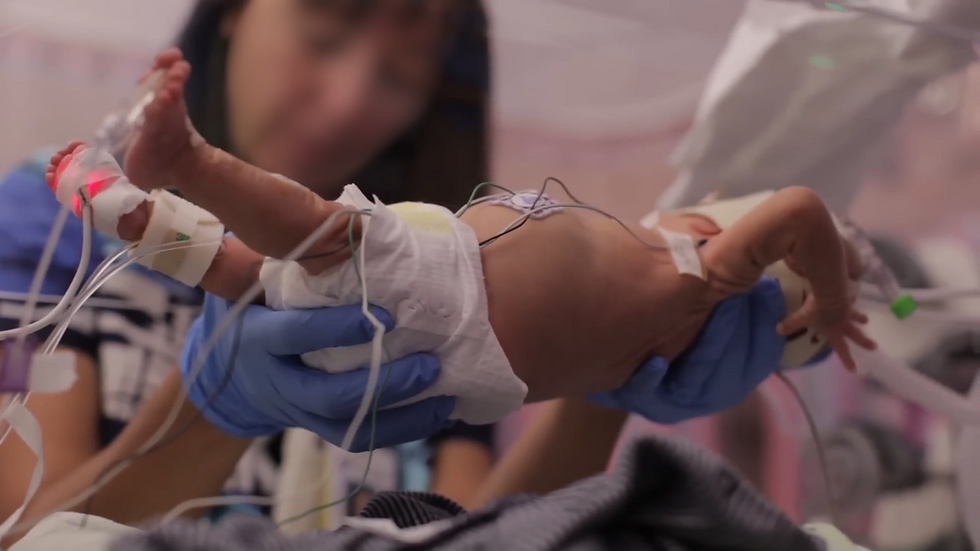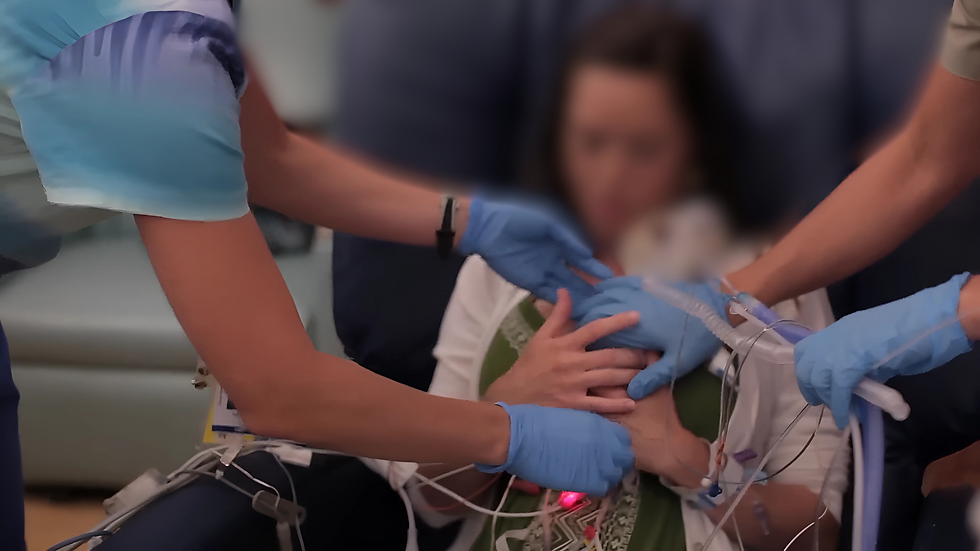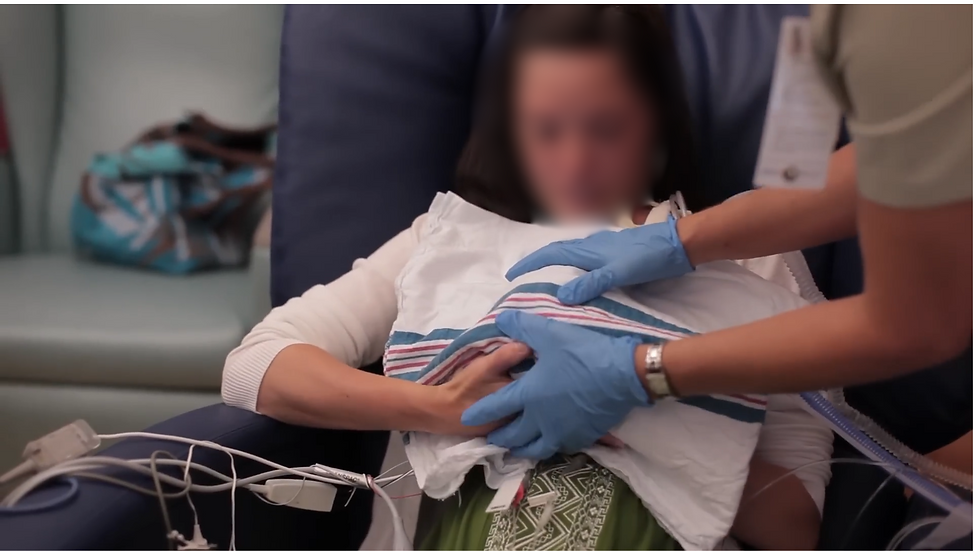
8+ Hours Recommended,
But only <1 Hour Delivered.
The WHO recommends at least 8 hours of daily skin-to-skin care for preterm infants.
But across Neonatal ICUs around the world, the reality is far from that.
Separation is the norm—and it comes at a cost.
The Impact of Separation
The Separation between an infant and their parents impacts everyone involved in the process, from the baby and their family, through their health providers, and society at large.

Increased stress, unstable vitals, higher risk of infection, and impaired neurodevelopment.

Challenges with milk supply and breastfeeding, heightened anxiety, increased risk of postpartum depression.

Often sidelined from caregiving role, missing critical bonding opportunities.

More time spent troubleshooting alarms, repositioning, and managing instability.

More time spent troubleshooting alarms, repositioning, and managing instability.

Increased length of stay, higher costs, and lower satisfaction ratings.
Poorer outcomes at population level, systemic inefficiencies, and widened health disparities.

"Skin-to-skin is the normal place for any mammalian offspring.
So rather than saying 'continuous SSC reduces complications and mortality', we should regard SSC as the norm.
It is separation in the incubator that increases complications..."
Itamar Nitzan, Senior Neonatologist and Co-Founder of Skincubator Neocare
Barriers to Connection
For more than three years we have thoroughly mapped over 100 barriers to immediate, prolonged, skin-to-skin care. They vary for babies, parents, providers and payers. Some are deeply personal, while others are institutional. Some are local and unique, while others are common across the globe.
Below are examples of some of the unique barriers we have been working to address.
Challenge #1: Transfers from the incubator and back
.png)
The Problem
Moving fragile preterm infants between incubators and caregivers is risky, complex, and time-consuming.
The Barrier
It often takes two or more staff to assist, creates anxiety for parents, and infant may get cold or unstable during the transfer. All of these may delay or discourage skin-to-skin care— especially in the first days of life.
Our Solution
A combination of a frictionless retractable transfer pad, line and tube anchors and chamber that retains heat and humidity to enable safe, easy, minimal handling transfers.
.png)
Challenge #2: Safety concerns during skin-to-skin care
The Problem
During SSC, fragile preterm infants are supported with makeshift setups—blankets for warmth, tape to secure tubes, and pillows to prevent slipping. These improvised solutions were never designed for medical-grade safety.
The Barrier
There are no standardized, supportive structures to ensure safe SSC for ventilated or critically ill infants. Without visibility of the infant’s body, reliable tube stabilization, or physical safeguards against slipping or falling, clinicians are forced to limit SSC time—or avoid it altogether—out of justified concern for safety.
Our Solution
Skincubator replaces improvised setups with a purpose-built, wearable incubator. It securely anchors lines and respiratory tubes, prevents slippage with ergonomic support, and maintains full visibility of the infant’s body—ensuring quick clinical access at all times. The entire system is designed to keep the baby stable on the parent’s chest without relying on blankets, tape, or nurse improvisation.
Challenge #3:
Temp. & Humidity
The Problem
It has been shown that in the first days of life fragile preterm infants may lose fluids at a high rate, leading to dehydration. In addition, staff often sites the infant getting cold as one of the major reasons for stopping a skin-to-skin care session.
The Barrier
It is challenging to maintain a stable microenvironment during skin-to-skin care. Blankets and hats offer limited protection, and even brief cooling or drying of the infant's skin can trigger instability. This risk often leads staff to shorten sessions—or avoid them entirely—for very low birth weight or medically complex infants.
Our Solution
The world's first wearable incubator, that enables for stable temperature and humidity retention, creating a stable micro-environment for the infant during prolonged skin-to-skin care sessions.


Challenge #4: Parent Engagement
The Problem
Many parents are unaware of the importance of skin-to-skin care, while staff doesn't have the sufficient resources to engage them deeply and personally. Many parents fear they will harm the baby, do it wrong, or that "it is nice to have".
The Barrier
Engaging parents within the constraings of the NICU - in terms of space, time and avaialbility is challenging. In addition, communicating with parents while they are experiencing the difficulties of preterm birth adds additional layers of complexity.
Our Solution
A personalized, multi-medium solution engineered to supplement the NICU staff, while engaging the parents deeply from the moment they arrive to the NICU.
We are building the eco-system for the NICUs of the future, promoting connection instead of separation.
Our solutions address the critical clinical, technical, and behvioral barriers identified to impact the ability of NICUs and caregivers to perform immediate, prolonged, skin-to-skin care the most.
SkinCubator | SkinConnect | And more
Challenge #5:
Accurate Documentation
The Problem
Skin-to-skin care is not accurately tracked in most units, relying on free text notes in the medical records that prevent accurate management.
The Barrier
The medical records, clinical and nursing workflows do not have easy-to-use solutions for accurate tracking of skin-to-skin care performance, and the individual barriers for each family.
Our Solution
A structured, personalized, smart system that enables accurate and streamlined tracking of the intervention, with the ability to analyze the performance of each family and the unit at large.

